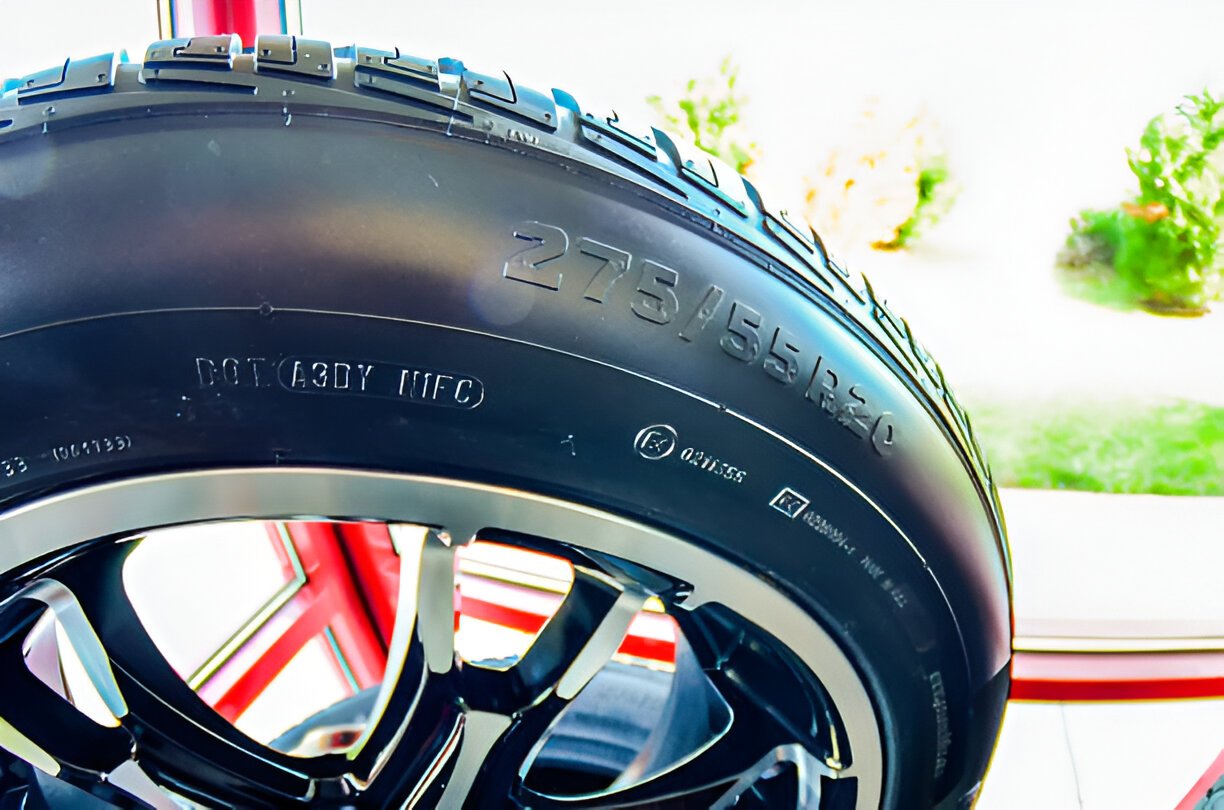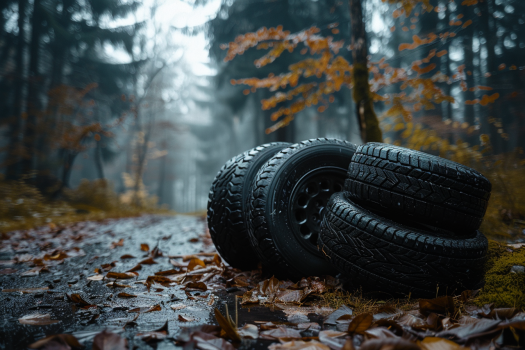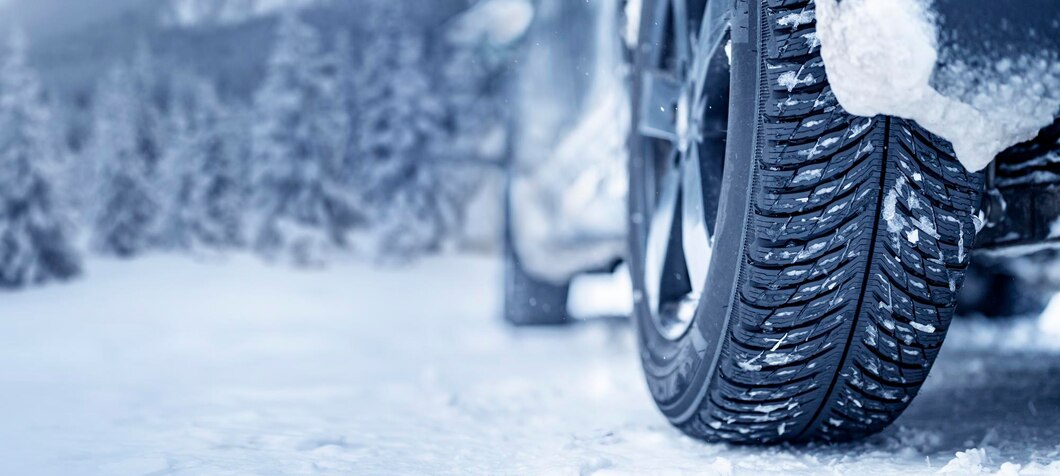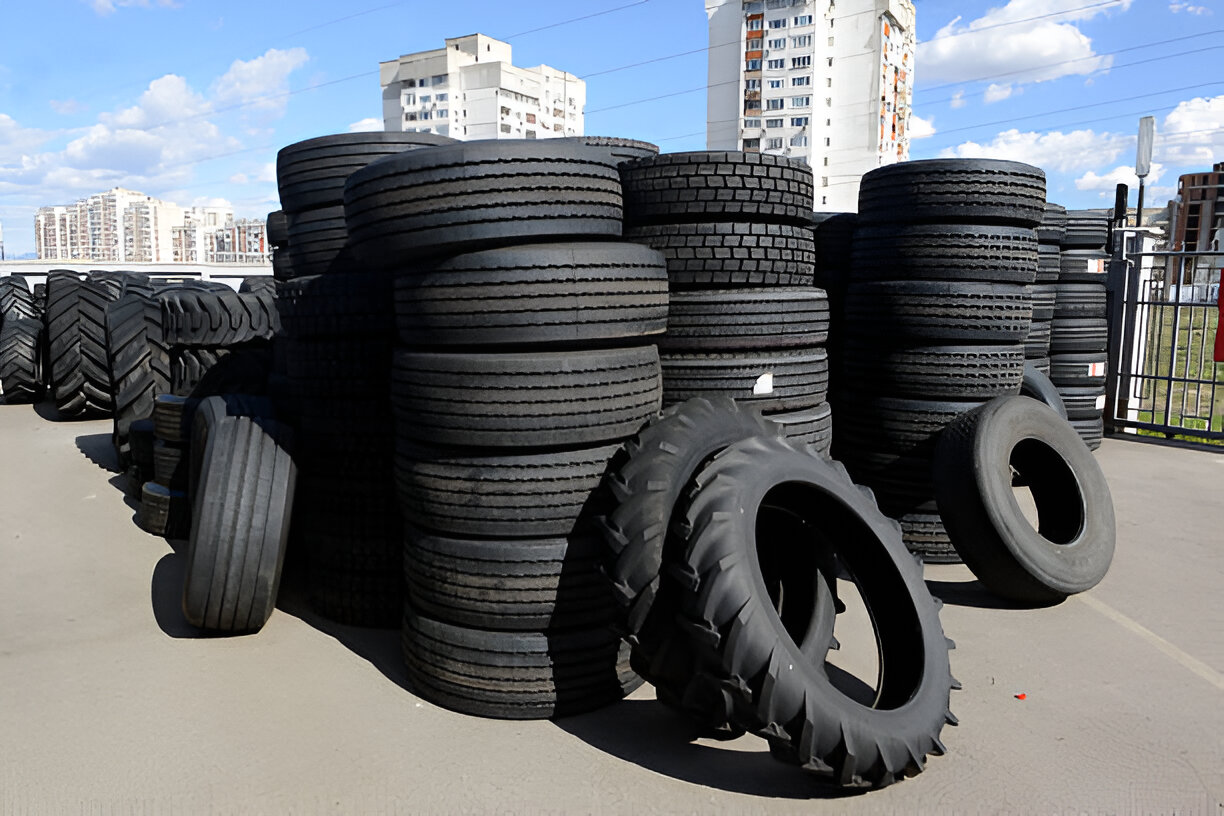Last Updated on November 8, 2024
Ensuring Longevity and Safety with the Right Tire Pressure
Too high? Too low? Just right! Your vehicle and your life have something in common: both are chock-full of pressure (we hope the latter isn’t too high). All responsible vehicle owners wonder about the correct tire pressure at one point or another. The short answer is that your tires should be filled to optimum pressure levels.
The long answer is that tire pressure can be tricky, but having too much is better than too little. How much is too little? Keep reading for the pressure in particular.
What’s The Right Tire Pressure For A Tire?
Tire pressure might seem like a minuscule detail in the grander scheme of vehicular maintenance, but it holds immense importance. It’s not merely about ensuring your tires are filled. It’s about ensuring they’re filled right. But how does one determine the correct tire pressure?
The Importance of Tire Pressure
Firstly, let’s delve into why tire pressure matters. Correct tire inflation:
- Enhances Fuel Efficiency: Right tire pressure means less friction and resistance on the road, leading to better fuel efficiency.
- Improves Handling and Safety: Properly inflated tires respond better to turns, stops, and road conditions.
- Prevents Unnecessary Wear: An over or under-inflated tire can lead to uneven wear, reducing lifespan.
Where do I find the correct PSI level for my car?
PSI measures the level of air present in your vehicle’s tires in pounds per square inch.
When it comes to regulating your car’s tire pressure, the first order of business is knowing the correct amount of pressure your tires should hold. This is one of those “it depends” situations because the magic number depends on the car, truck, or SUV.
To be as confusing as possible, your vehicle lists PSI in two places. The most logical place for this information would be on the tire itself. However, a tire’s sidewall lists the maximum pressure it should hold, meaning you shouldn’t even be getting close to that number.
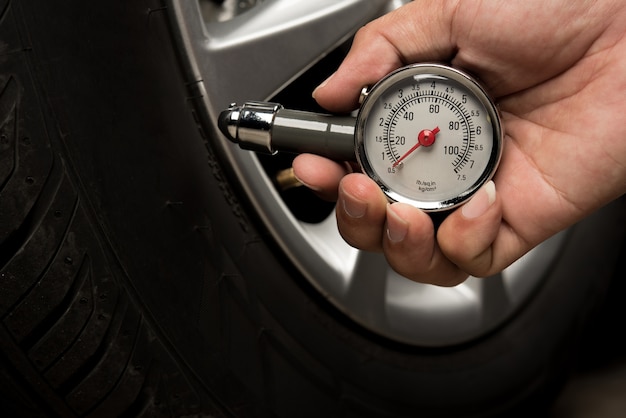
The other place the PSI is usually listed is inside the door jamb of your driver’s side door. This is the correct number to reference when filling your tires. If you do not see the PSI listing inside the driver’s side door pillar, refer to your vehicle’s owner’s manual for the correct location.
How to Determine the Right Pressure
Most vehicles have a recommended tire pressure mentioned in the owner’s manual or on a sticker inside the driver’s side door. But remember:
- Seasonal Changes Matter: Cold weather can decrease tire pressure, while hot weather can increase it. Check and adjust as needed regularly.
- Consider the Load: If you’re carrying heavy loads, you might need to adjust the tire pressure accordingly.
- Tire Type Plays a Role: High-performance or winter tires might have different recommended pressures.
How much pressure is in my tires?
Once you have identified the proper pressure level for your vehicle, the next step is to determine how much air pressure is present in your current tires. Note pressure level variances from tire to tire; drastic changes in pressure level between two given tires are not uncommon.
Some might be too high, and others too low, depending on factors such as elevation, air temperature, and length of time the tires have been on your car. It’s important to check each one separately (including the spare)!
Specific car models require you to check PSI manually with a tire pressure gauge. In contrast, other newer models have an integrated tire pressure monitor (TPM) that automatically notifies you of the exact tire pressure levels in all four tires.
Most cars will, at the very least, notify you when pressure levels drop below the recommended level in one or more of your tires.
Checking Tire Pressure
- Use a Quality Gauge: Not all gauges are created equal. Invest in a reliable one.
- Check When Cold: Tires should be checked for accurate stationary readings for at least three hours.
- Don’t Forget the Spare: While it might not be in use, keeping the spare tire at the correct pressure ensures it’s ready when needed.
How often do I need to check my tire pressure level?
More frequently than you think. Obi-Wan wasn’t lying when he said, “Your eyes can deceive you; don’t trust them.” He might have been talking about tire pressure. Unfortunately, what the eye perceives tends not to align with what the tire gauge measures.
Regardless of whether or not your tire(s) look low, the rule of thumb for checking pressure is once a month, possibly more if the weather is constantly fluctuating.
For every 10-degree drop in air temperature, the pressure in your tires fluctuates by 1-2 pounds per square inch. The best time to check the pressure is after the tires have been cooled and your car has sat idle for a while.
Some cars with more advanced technology may require driving for several yards while the system calculates pressure levels. In that case, the next time you leave for work, start your car, select the TPM feature, and follow the prompts.
Adjusting Tire Pressure
If your tire pressure isn’t at the recommended level:
- For Low Pressure: Use a quality air compressor to fill the tire to the recommended level.
- For High Pressure: Release some air until you reach the correct level.
Why is tire pressure level so crucial?
Incorrect tire pressure affects ride comfort, fuel economy, and length of tire life.
As mentioned earlier, having too much pressure is a safer bet than having too little (as long as you’re not over the maximum allowable amount). The only downside to this is a slightly rougher ride since less rubber is in contact with the road.
The consequences of low tire pressure are significantly more severe. Increased traction in common tires leads to premature wear and overheating—or worse, a complete blowout.
At tires-easy, we prioritize your safety on the roads above all else. The next time you plan on hitting the road, stop for a minute to check your tire pressure levels and perform a quick fill-up, if necessary.
Conclusion
The correct tire pressure ensures a smooth ride and a safer one. By regularly checking and adjusting your tire’s inflation, you’re investing in the tire’s longevity and your vehicle’s overall performance.
Navigating the world of vehicle maintenance can be daunting, but ensuring the correct tire pressure shouldn’t be overlooked. It’s a crucial element that guarantees optimal performance, longevity, and safety of your tires.
Remember, every journey begins and ends with your tires, and maintaining the correct tire pressure is your first step to a safer, smoother, and more efficient ride. Embrace the importance of tire inflation and make your journeys effortless and secure.
Maximize Your Drive
Ready to enhance your driving experience?
Ensure your tires are always in peak condition with Tire Easy. Find the best options for your vehicle and hit the road with confidence. Shop now and feel the difference the correct tire pressure can make.
With Tire Easy, drive easy.
FAQs
How do you determine the tire’s correct inflation pressure?
To determine the correct tire pressure for your vehicle, consult the manufacturer’s recommended PSI, typically found on a sticker inside the driver’s side doorjamb or in the vehicle’s manual. Following this recommendation rather than the maximum pressure indicated on the tire sidewall is essential to ensure you have the correct tire pressure for your specific vehicle.
How do you check optimal tire pressure?
- To check the optimal or proper tire pressure:
- Use a quality tire pressure gauge, ensuring it’s calibrated correctly.
- Check the tires when cold, preferably after the vehicle has been stationary for at least three hours.
- Insert the gauge into the tire’s valve stem. The indicator will show a reading of the pressure in PSI.
- Compare the reading with the manufacturer’s recommended tire pressure.
What is optimal tire pressure in PSI?
Optimal tire pressure in PSI varies based on the vehicle and tire type. Generally, most passenger cars recommend a tire pressure range of 32-35 PSI. However, it’s vital to refer to the manufacturer’s recommendation (usually found on a sticker inside the driver’s side doorjamb or in the vehicle manual) to determine the correct tire pressure for your specific model and make.
-
Proofreader




